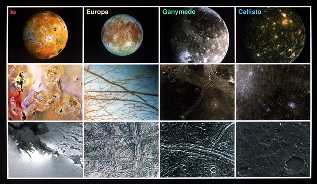This picture shows images of the Galilean Satellites taken by the Galileo spacecraft, as well as details from the surfaces of these moons.
Click on image for full size
NASA
Galilean Satellites
The Galilean satellites are the 4 big moons of Jupiter,
Io,
Europa,
Ganymede, and
Callisto. These moons are called Galilean because they were discovered by
Galileo Galilei in 1610.
In this picture, Io, and Io’s surface, are shown on the left-most end, then Europa, and its surface, then Ganymede, then Callisto. Of Jupiter’s 60 moons, these four are the biggest.
You might also be interested in:

Europa was first discovered by Galileo in 1610, making it one of the Galilean Satellites. It is Jupiter's 4th largest moon, 670,900 km ( miles) from Jupiter. Europa's diameter is about half the distance
...more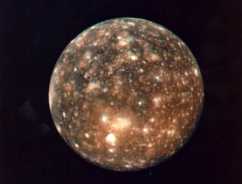
Callisto was first discovered by Galileo in 1610. It is the 2nd largest moon in the solar system, and is larger than the Earth's moon. It is about as big as the distance across the United States. Callisto
...more
AU stands for Astronomical Units. It is an easy way to measure large distances in space. It is the distance between the Earth and the Sun, which is about 93 million miles. For really big distances, we
...more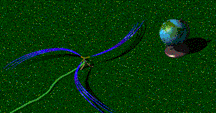
The solar wind is formed as the Sun's top layer blows off into space. It carries magnetic fields still attached to the Sun. Streams appear to flow into space as if they are spiraling out from the Sun,
...more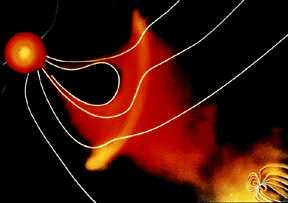
For a planet to be affected by a blob of material being ejected by the sun, the planet must be in the path of the blob, as shown in this picture. The Earth and its magnetosphere are shown in the bottom
...more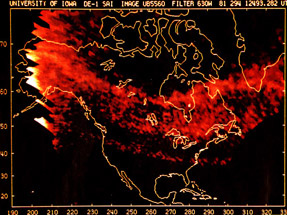
If someone says they saw an aurora, you might picture something like this. There is another type of aurora that we can't see. These aurora are called SAR arcs. The SAR stands for Stable Auroral Red. That
...more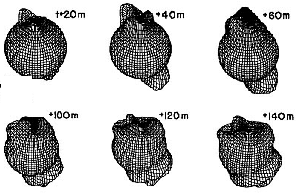
This figure shows the effect of the aurora on the atmosphere. When FAC's enter the atmosphere and create the aurora, they heat the atmosphere suddenly and abruptly. This creates an impulse which travels
...more


